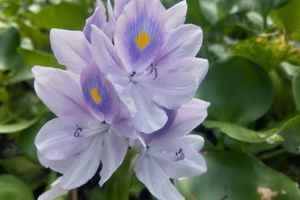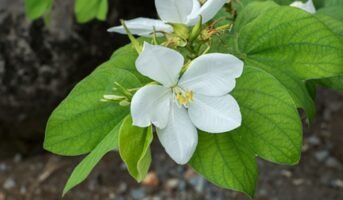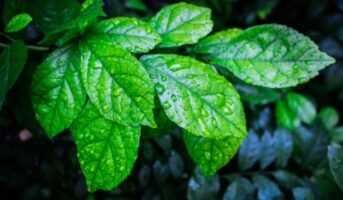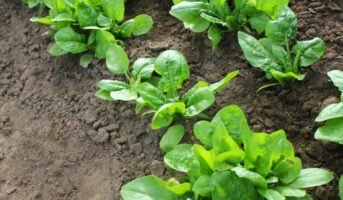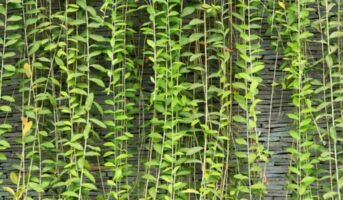What is water hyacinth?
The common water hyacinth is a South American natural aquatic plant. Water hyacinth’s scientific name is Pontederia crassipes (formerly known as Eichhornia crassipes). However, it has been naturalised all over the world and can become invasive when it is grown outside of its original habitat.
Within the Pontederia genus, this one species makes up the entirety of the subgenus known as Oshunae. Due to the fact that it has invasive growth characteristics, it is sometimes referred to as the “terror of Bengal.”

Source: Pinterest
Water hyacinth: Key facts
| Common name | Water hyacinth |
| Family | Pontederiaceae |
| Native Area | South America |
| Maximum growth | 3ft. |
| Water Quality | 5-7.5 |
| Sun exposure | Full/partial sun |
| Bloom Period | Summers |
See also: All about the Wishbone Flower
Water hyacinth: Features
- Water hyacinth is a free-floating perennial aquatic plant native to tropical and subtropical South America.
- Water hyacinth, characterised by its broad, thick, glossy, ovate leaves, can reach heights of up to 1 m (3 ft) above the water’s surface.
- The stem of water hyacinth, which is held aloft by bulbous nodules at its base, has leaves that are 10–20 cm (4–8 inches) in diameter and floats on the water’s surface.
- Water hyacinth stems are lengthy, spongey, and bulbous. The feathery, dangling roots are a deep purple colour.
- Six-petaled, mainly lavender or pink blooms bloom in a cluster on an upright stem.
- When not in flower, water hyacinth may be confused for frog’s-bit or Amazon frogbit.
- Water hyacinth, one of the fastest-growing plants, spreads by sending forth runners, which develop into new plants.
- Each water hyacinth plant can develop thousands of seeds each year, and these seeds can remain viable for more than 28 years.
- Mats of common water hyacinth may expand by a factor of two in just a week or two.
- Moreover, the number of water hyacinth plants are believed to increase by more than a hundredfold in just 23 days, although not growing significantly larger.
- Water hyacinth blooms may reproduce both sexually and clonally in their native region, and they are pollinated by long-tongued bees.
- Water hyacinth’s capacity to clone itself contributes to its invasiveness, and it’s possible that huge areas are all of the same genetic types.
- The water hyacinth is considered tristylous because of its three distinct blossom forms.
- There are three different types of flowers, all of which are classified according to the length of their pistils.
- This pattern of floral morph distribution around the globe suggests that founder events have played a crucial role in the worldwide dissemination of this species.

Source: Pinterest
How to grow Water Hyacinth
- Remove any yellow leaves and cut the roots to a length of around 5 cm (2 in) before planting your water hyacinths. Spread them out on the top of your pond.
- Water hyacinths will bloom better if they are kept in a hula hoop, a circle of tubing, or a water hyacinth basket.
- One of the quickest-growing aquatic plants, water hyacinths may more than double in size in only one month.
- If water hyacinth are not tamed or routinely clipped, they may quickly spread from one end of your pond to the other.
- In tropical regions, water hyacinths are perennial plants that flower continuously throughout the year. But they are annuals in temperate and subtropical regions, and their blooming season coincides with the warmest time of year, from midsummer to mid-fall.
- These blooms, despite the weather, are diurnal, meaning they open in the morning and close at night.
- Each water hyacinth bloom only lasts a few days until it wilts and sinks to the bottom of the pool. Additionally, water hyacinths only often flower when they are grouped together. Therefore solitary free-floating plants are highly unlikely to flower.
- These tropical plants thrive in warm water (between 21 and 27 degrees Celsius; 70 and 80 degrees Fahrenheit) and full or partial sunshine. Temperatures between 12 and 35 degrees Celsius (54 and 95 degrees Fahrenheit) are fine for water hyacinths, but frost and water temperatures above 34 degrees Celsius (93 degrees Fahrenheit) are fatal.
- While they may thrive in a pH range from 5.0 to 7.5, water hyacinths cannot withstand salinities higher than 5 ppt.
Water hyacinth: Maintenance tips
- Withered blooms and other plant debris can reduce the amount of oxygen in the water and increase the quantity of trash in your pond.
- Trimming dead stems and skimming root parts that may sink to the bottom is essential if you plan to keep fish in the aquarium.
- You should prune your water hyacinths regularly since they can grow to twice their original size in only two weeks.
- In the absence of vigilant care, water hyacinths may quickly outgrow their confines and colonise the whole pond in your landscape.
- In order to thrive, water hyacinths need enough organic matter and other nutrients.
- Water hyacinths can be saved from becoming yellow by floating them in a tank of water with diluted liquid fertiliser (for 12-4-8 fertiliser, one teaspoon per gallon or 5 ml per 4L is recommended).
What can be done to stop the spread of Water Hyacinth?
Water Hyacinth can be stopped by using physical, chemical, and biological methods.
Physical way: Spread of water hyacinth can be done in a physical way by cutting the plant. You can use manual ways and machines for the same.
Chemical way: Chemicals like glyphosate, diquat and 2,4‐D amine, metsulfuron-methyl, sulfosate and sulfentrazone can help in spread of water hyacinth.
Biological way: Environment friendly ways like use of water hyacinth borer, Neochetina bruchi, N. eichhorniae feed on water hyacinth. By this way, their size gets reduced, vegetative propagation gets reduced and also impacts seed production.
Water hyacinth: Water treatment uses
- Water hyacinth plays a very significant part in the fight against pollution since it is able to absorb many different kinds of contaminants, including the heavy metals that are found in water.
- This plant has been utilised in the pre-treatment process at a facility that treats drinking water.
- Hyacinth has the ability to take up minerals and other inorganic compounds from sewage. It is able to develop quickly regardless of the environment it is in.
- As a consequence of this, once it has served its purpose of cleaning sewage, it is then brought in for use as an organic fertiliser, such as composting or mulching.
- Hyacinth has the ability to absorb dissolved pollutants, nitrogen, phosphorus, and other nutrients, as well as suspended particles and algae.
- It has been utilised in the process of advanced water treatment in the treatment of sewage as well as the treatment of wastewater from hospitals.
Water hyacinth: Medicinal uses
- Dried hyacinth beans have been shown to improve digestion in certain people.
- The plant is also used to cure a variety of gastrointestinal ailments, including nausea and upset stomach, as well as bowels, diarrhoea, and worms.
- Hyacinth is commonly included in cosmetics and personal care products.
- For the treatment of a wide variety of skin conditions, water hyacinth is an excellent option because of the antimicrobial, antifungal, and antibacterial qualities that it possesses.
- In order to reduce inflammation, hyacinth is a popular remedy among residents of the Philippines. They first extract the juice from the hyacinth, then combine it with lemon juice, which is high in vitamin C, and last, they apply this concoction directly to the boil.
- As a consequence of this, it alleviates inflammation and lessens the size of the abscess.
Water hyacinth: Edible uses
- In Taiwan, the plant is harvested for its carotene content and utilised as a vegetable for consumption.
- Cooked inflorescence and green sections of the plant are traditional features of Javanese cuisine.
- The plant is also used in cooking among the Vietnamese, and its young leaves and flowers are sometimes added to salads.

Source: Pinterest
FAQs
Is the water hyacinth a plant that can be toxic to humans?
The leaves of the water hyacinth are not known to cause severe poisoning.
Do water hyacinths release oxygen into the air?
There is no production of oxygen by water hyacinth.
Is it possible for water hyacinths to thrive in saline water?
The high quantities of salt in the water make it difficult for water hyacinth to spread.
Why is water hyacinth known as the terror of Bengal?
Water hyacinth is an exotic shrub, but it grows at an alarming rate on the surface of a water body. This prevents the growth of aquatic organisms, such as fish, due to a lack of oxygen and light.
Housing News Desk is the news desk of leading online real estate portal, Housing.com. Housing News Desk focuses on a variety of topics such as real estate laws, taxes, current news, property trends, home loans, rentals, décor, green homes, home improvement, etc. The main objective of the news desk, is to cover the real estate sector from the perspective of providing information that is useful to the end-user.
Facebook: https://www.facebook.com/housing.com/
Twitter: https://twitter.com/Housing
Email: editor@housing.com
